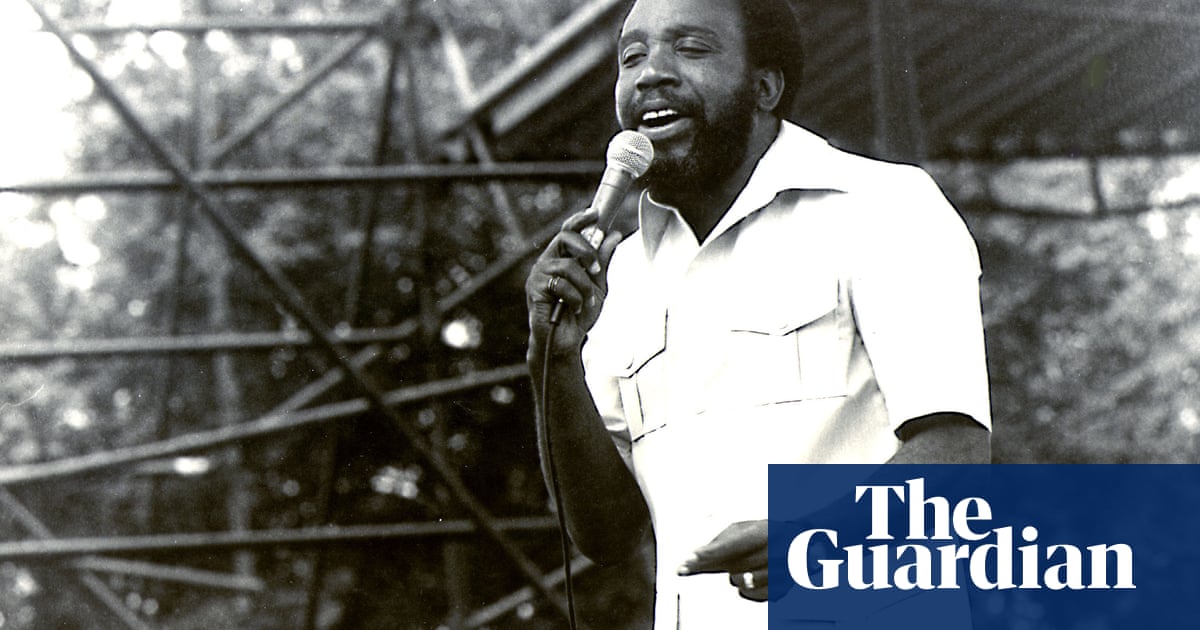Abandonment, when it came, crept in from the outskirts. Homes at the edge of town were first to go, then the peripheral grocery stores. It moved inward, slow but inexorable. The petrol station closed, and creeper vines climbed the pumps, amassing on the roof until it buckled under the strain. It swallowed the outer bus shelters, the pharmacies, the cinema, the cafe. The school shut down.
Today, one of the last institutions sustaining human occupation in Tyurkmen, a village in central Bulgaria, is the post office. Dimitrinka Dimcheva, a 56-year-old post officer, still keeps it open two days a week, bringing in packages of goods that local shops no longer exist to sell. Once a thriving town of more than 1,200, Tyurkmen is now home to fewer than 200 people.
On a warm spring afternoon, Dimcheva stood in the town square. “The weddings took place here, all of the folk dances, the volleyball. There were lots of young people. A pool,” she said. She gazed around, pointing to ruins or now-empty spaces where buildings once stood, remembering. There, the building that housed a small cinema. Behind it, the space for a school that burned down, was rebuilt, then closed. “Life was bubbling.” Now, she said, “life in the villages is dying”.
Thousands of similar villages are scattered across Bulgaria. After the fall of communism, people flocked to the cities in search of work, and over the next 30 years many villages emptied to the point of obliteration. As of the 2021 census, almost 300 villages were completely abandoned, and more than 1,000 had populations below 30 – most of them very elderly. With its low birthrates and high rates of emigration, Bulgaria has been emptying out for decades. Its population has dropped from close to 9 million in 1989, to fewer than 6.5 million – one of the worst peacetime population declines in modern history.
Bulgaria lies at the extreme end of this kind of demographic change, but the forces reshaping it are acting everywhere. Over the past half century, the global portion of people living in rural areas has decreased by almost a third. Farming is becoming increasingly industrial and concentrated. More than half of all people now live in and around cities, and that figure is expected to rise to 70% by 2050. In many countries, birthrates are dropping steadily, and while the global population is projected to keep growing until 2080, around half of that growth is being driven by fewer than 10 countries.
As populations move and shrink, people are leaving long-occupied places behind. Often they leave everything in place, ready for a return that never comes. In Tyurkmen, Christmas baubles still hang from the curtain rails in empty houses, slowly being wrapped by spiders. In one abandoned home, a porcelain cabinet lay inside a crater of rotted floorboards, plates still stacked above a spare packet of nappies for a visiting grandchild. Occasionally, abandonment happens all at once, when a legal ruling or evacuation sends people scuttling. But mostly, it is haphazard, creeping, unplanned. People just go.
Since the 1950s, some scholars estimate up to 400m hectares – an area close to the size of the European Union – of abandoned land have accumulated across the world. A team of scientists recently calculated that roughly 30m hectares of farmland had been abandoned across the mainland US since the 1980s. As the climate crisis renders more places unliveable – too threatened by flooding, water shortages and wildfires to build houses, soil too degraded and drought-stripped to farm – we can expect further displacements.

This world-altering shift has drawn remarkably little attention. “It has been there all the time – but we did not really describe it,” says Prof He Yin of Kent State University, one of the scientists now using remote sensing to create global maps of abandoned land. “We talk about expansion,” he said, referring to development of land. “Yes, absolutely that’s important. But there’s this other side – abandonment – that people don’t really talk about.”
Alongside this story of depopulation is another story – of what happens to the land left behind. To preserve a livable planet, it is crucial to preserve and expand forests, grasslands, healthy ecosystems and wild places. Huge expanses of abandoned land represent an opportunity but also a question, an ongoing experiment without clearly predictable outcomes. For thousands of years, humans have dramatically shaped the places where they live, transforming the Earth’s face. So what happens to the natural world when people disappear?
It was this puzzle that drew ecologist Gergana Daskalova to Tyurkmen. On a hot, quiet morning in May she walked down the main street. It was empty of people, but lined by papers that fluttered in the early summer heat, tugging at their staples on the fences, gates and power poles. When a member of the household dies in Bulgaria, it is traditional to mark their passing with a notice. The A4 printouts featured a name, photograph, date of death and a brief tribute. Each noted how long ago the loved one had died: six months, a year, a decade, 22 years. In villages across the country, these posters often also mark the end of human habitation. “If you walk around, you’ll see it’s like this clock that’s ticking, measuring the time since those people have left us,” Daskalova said. “On a human level, that’s very sad. But that clock, it’s also measuring the end of human impact, and the onset of environmental change afterwards.”

Daskalova specialises in global change ecology: how large-scale human activity is reshaping the natural world. She is in the middle of an ambitious research project, studying 30 villages across the Bulgarian countryside in different stages of abandonment. Along with collaborators and students, she is gathering a huge range of data: using aerial drones to map the return of forests, block-by-block botany surveys to see what plants are growing, audio recorders on trees to capture shifts in the density and volume of birdsong. Over time, she hopes to compare the ecology of derelict villages with those where some people remain, providing a comprehensive picture of how nature responds when humans leave.
Daskalova, in her early 30s, with a chatty warmth and patient knack for breaking down scientific theory, possibly honed by a year of explaining to curious shepherds why she’s out strapping microphones to trees in remote fields. She recently gave birth to her son, and on some days he watched from her hip, swaying and serious-eyed, as she strode around research plots.
Tyurkmen was not a randomly selected research site – it is the place she grew up. Like many of her generation, as a young child Daskalova was largely raised by grandparents while her parents went to work in the nearest city. Eventually, she left for university. “For a decade, I was one of the people who left the village and only returned occasionally, and every time I came back, there were less and less people living on my street,” she said. When she was younger, Daskalova would track the creep of abandonment in the wintertime, watching to see whether smoke emerged from a chimney down the street, or light shone from one of the windows. “Instead, one by one, the lights get turned off,” she said.
For the first few years of her career, Daskalova worked in far-flung places, including the arctic tundra. But she remembered the great depopulation she had lived through, and recognised that it was part of something wider, with scope to reshape the future of thousands of species.

Today, she lives and works in the home in Tyurkmen that once belonged to her grandparents. All around her, homes stand empty. Across the street, one house has crumpled inward, like a cardboard box left in the rain. Inside, that morning, nesting barn swallows orbited a bedroom. The front door had been knocked off its hinges, still carrying an enamel plaque: an award dispensed by communist-era local authorities, reading “exemplary home”.
Abandoned places are not the most alluring research sites: “They’re not the rainforests, not the gorillas,” said Daskalova. Individually, each research site is just a village, like thousands of others. “But in a way that’s what makes it special,” she continued, “because depopulation is happening at a really big scale.” And what comes after abandonment is often not what we expect.
News that great swathes of our planet are being abandoned can excite visions of a rewilded Eden in the ruins of humanity. In the absence of humans, nature will come roaring back. Deer will roam the streets of crumbling cities, vines will crack the concrete, football fields will give way to forests. The skies will clear and species will flourish. In 2020, lockdowns gave many people a taste of what semi-abandonment might look like. As humans were forced indoors, wild creatures returned to some urban streets and suburban gardens. “Humans are the virus,” observers declared, in a mixture of earnest commentary and internet punchlines. In their absence, “nature is healing”.
Visions of humans as a pox upon the natural world – and of paradise sprouting in our absence – are intertwined with some of ecology’s oldest ideas. In the late 19th century, botanist Frederick Clements helped popularise succession theory, the idea that left to its own devices, any disturbed landscape will follow a step-by-step progression. A ploughed field, for instance, will be overtaken first by fast-growing grasses and weeds, then shrubs, which finally thicken into trees and forest. Clements argued that any place would move through succession to a “climax” state of stable equilibrium. The final result could differ according to climate and geography, an alpine forest being different from a swamp or desert. But the essential trajectory was always the same: a “universal law”, Clements wrote, of ecosystems climbing toward climax like an animal progressing through infancy toward adulthood.

The idea gained traction through the early 20th century, coinciding with a period of explosive growth in human cities, populations and industry. It had a kind of simple, elegant beauty. As people watched human activity transform the earth around them, it also offered a certain comfort. No matter how dramatic the disturbance – whether the retreat of a glacier or the razing of a forest for farmland – nature’s capacity to return remained. That ideal climax state would rest like a substrate beneath the soil, lying dormant even as the land above was tilled or excavated or burned or paved. To return, all it needed was time and benign neglect.
Over time, Clements’ more sweeping theories were picked apart by fellow botanists. The stable, permanent climax communities he had theorised proved elusive: field studies continued to find ecosystems passing through unpredictable cycles of collapse, regeneration, divergence and stasis. Today, this deterministic version of succession theory is seen as widely debunked. But Clements’ vision endured in the popular imagination – sometimes to the frustration of ecologists. “Many popular ideas about the environment are premised on the conviction that nature is … capable of preserving its natural balance more or less indefinitely if only humans can avoid disturbing it,” ecological historian William Cronon wrote in 1995. “These stories are ours, not nature’s. The natural world does not organise itself into parables.”
In practice, scientists have found that humanity’s relationship to the natural world is far more complex than we often assume. This is one of Daskalova’s more counterintuitive findings: rather than always being antithetical to nature, human presence can help make life possible for a vast array of species. Even more surprisingly, total abandonment can sometimes have worse consequences for biodiversity than landscapes where some people remain.
To show how this could be possible, Daskalova drove me to a village buried in vines. Kreslyuvtsi lies in semi-mountainous regions of central Bulgaria. For years now, most of the village has been completely abandoned. In the spectrum of villages that Daskalova is studying, it offers a case study of what something approaching absolute human absence brings.
Standing at the edge of a hillside, Daskalova gingerly took a step off the path and out into space. When her foot landed, she bounced ever so slightly, held up by the latticing of thousands of bramble vines, woven tightly enough to create their own buoyant elasticity. Somewhere beneath was a steeply sloped bank of land, and out a few metres in front was one of the long-abandoned homes of Kreslyuvtsi village. Its form was slowly collapsing as the stone walls crumbled. Brambles had surged up over the house until only an upper corner of the tiled roof was fully visible, jutting above the vines like the prow of a boat in its final stages of sinking. “They will swallow this place whole,” Daskalova said.

The brambles illustrate the first force that abandoned land faces: when humans leave en masse, new dominant species can make a clean sweep. The worst offenders are not brambles, but imported, invasive species. In Poland, where about 12% of farmland was abandoned after the fall of communism, the fields have turned thick mustard yellow, blanketed by the bright pollen cascades of Canadian goldenrod. This species has colonised about 75% of the country’s abandoned fields, and where goldenrod grows, little else thrives. Scientists studying this abandoned land found that wild pollinators decreased by 60%-70%, and the number of birds halved. In Bulgaria, an emerging threat is the Tree of Heaven (Ailanthus altissima), a hardy, fast-growing, disease-resistant tree from northern China, with bitter-smelling sap that repels other plant, animal and microbial life.
These monocultures can create “biological deserts”, where just one species grows. The need to diversify them is not only an aesthetic, human preference. Monocultures are associated with soil degradation and nutrient depletion, extinctions of other species, difficulty purifying water, catastrophic wildfires, vulnerability to drought and the rapid spread of disease.
In some cases, a monoculture’s dominance is temporary. Even virulent invasive species can sometimes act as “nursery” environments for a variety of plants and creatures that might eventually outgrow them. Other times, an ecosystem may stall, failing to recover or diversify. “It is widely believed that once destroyed, forests can recover naturally from grassland or shrubland within a few decades in a process known as forest succession, and that tree planting can help,” scientists discussing the process on Hong Kong plantations wrote in 2023. “Our study shows that forests do not recover as much, or as rapidly, as people think they do.”
Humans are often responsible for creating monocultures. But there is also a surprising, unacknowledged role that people can play in holding them back.
Out among the brambles in Kreslyuvtsi, Daskalova turned, carefully dragging her gumboots back toward the path winding up the hillside. Reaching the path, she crouched in the grass and began to name species around her feet: grasses, ivy, but also buttercups, purple flowering vines, a tiny yellow orchid. “I can’t imagine many people walk up this road, but every once in a while some do,” she says. In the process, they have held back the rising tide of brambles, and opened up space for this small flurry of species, a scatter of colour against the flat green opacity of vines.
From where Daskalova stood, the path led up to an opening in the trees, where long grass and wildflowers grew in a clearcut meadow. Here, again, a small island of fragile blooms revealed the history of this land. Buttercups and agricultural weeds signalled that humans were here in the not-too-distant past, as did the clearing itself. Daskalova pointed to the thick-woven darkness of trees around the space, arranged like an audience in an amphitheatre, their network of branches already forking into the precious light of the clearing. “They’re right at the edge, ready to move in when that opportunity arises,” she said. “If there’s no grazing or mowing, it could only be something like five years until it’s all in the shadows of a denser canopy.”
When people imagine ecosystems recovering, this return to forest is often what springs to mind. But forests only represent a small sliver of possible habitats. For other species, the currency of life is light, and a dense, closed canopy of forest is impossible to survive. A swallow is perfectly adapted to vast, open fields: the curve of its wings and distinctive forking tail designed for fast pursuit of insects hovering above meadows. A starling murmuration, moving across the sky like spilled pepper over a tablecloth, is an adaptation to open fields: repelling predators, protecting the roost. Vast numbers of species adapted and co-evolved with these open places – plants, mammals, insects, grazers, species like wildflowers, that relish disturbance and light. The rich biodiversity of open grasslands can be even greater than that of temperate forests.

Once, many of these kinds of environments were created by megafauna. Mammoths, giant water buffalo, bison and cave bears were large enough to reshape forests, toppling trees to create steppes and prairie. Scientists have estimated that megafauna were responsible for keeping about 30% of South America’s forests at bay. Almost all of them are now extinct, the timing of their demise usually linked to the arrival of humans. In many places, humans are the only remaining creatures that can consistently reshape landscapes in these radical ways, pushing back the shade of the trees for other creatures to take root.
For millennia, all across the planet, humans have been using fire and tools to open up land for agriculture, gardens, grazing and hunting. In the process, we created ecological “mosaics”, or “patchworks”: landscapes that hold a mixture of habitats, like meadows, gardens and forests. These places were not designed as nature reserves, but they often catered to hugely diverse animal life. In her book Nature’s Ghosts, Sophie Yeo details research indicating that European hay meadows cultivated for animal feed were actually more successful at preserving a vast array of species than meadows explicitly cultivated for biodiversity. Looking back over the early Holocene – beginning 11,700 years ago – researchers have found that human presence was about as likely to increase biodiversity as reduce it.
Not all human-created landscapes have the same value. A paved subdivision with astroturfed lawns is very different to a village with diverse vegetable and flower gardens. A traditional hay meadow is radically different from a pesticide-drenched plantation of soya beans. But scientists continue to find evidence that the old idea of humans as antithetical to nature is also wrong-headed, and that rosy visions of thriving, human-free environments are more imaginary than real. “People are still imagining [nature as] this kind of pristine place that’s going to be saved from people,” says US environmental scientist Erle Ellis. “That is definitely a misunderstanding.”
In 2021, Ellis published new research that looked back 12,000 years. He and his colleagues found that nearly three-quarters of Earth’s land was occupied and shaped by human societies. Other researchers have pushed even further back. Examining human-biodiversity interactions in the Late Pleistocene – back as far as 120,000 years – scientists concluded that across most of the planet, “‘Pristine’ landscapes simply do not exist and, in most cases, have not existed for millennia”.
Many of the landscapes people now tend to think of as untouched, from the savanna lands of equatorial Africa to the deep Amazon rainforest, have already been deeply transformed by human presence. “The essential role that people play in ecology is the critical thing, and it’s been ignored,” Ellis says. “The most biodiverse places left on Earth – this is almost universally true – have Indigenous people in them. Why? Well, they conserve a lot of that biodiversity and actually produce it. They maintain that heterogeneous landscape.”
There is no question that recent human activity – particularly the massive clearing of ecosystems and industrial consumption of fossil fuels – has been an ecological catastrophe. But for nature to be restored to a past version of itself, the question might be less one of human absence, than what form human presence can take.
In the small communities riding out abandonment in Bulgaria, you sometimes see patches of gentle human presence that might offer paths for the future, as well as glimpses of the past. Off Tyurkmen’s main street, a dirt road leads to a stretch of scrubby meadowland. On the day I visited, Slavcho Petkov Stoyanov, who is 56 years old, stood watching as his sheep grazed among the shrubs. “Years ago, nobody would have let me graze here,” he said. “All this was used for growing vegetables.” His is the last flock in the village and he usually employs shepherds to watch them – but recently those young men left town and he was back out in the fields himself, sitting in a patch of shade to dodge the midday sun.

Stoyanov is one of the few remaining people here who help to maintain a diverse, “mosaic” landscape: in some empty blocks, the canopy of trees is expanding, but others are cleared by grazing and littered with wildflowers. He offers an example of how some forms of human occupation can be a protection against environmental damage rather than a source. As rural places like Tyurkmen depopulate, they become vulnerable to new forms of exploitation: land prices drop, and there are fewer people around to oppose projects like mines and quarries. “What you can get is depopulation as a stepping stone to industrialisation,” Daskalova told me.
Stoyanov pointed to the reservoir below the fields. His grandparents helped dig it themselves. Then, a few years ago, a company was granted cheap contracts by the municipality to take fish from it. The process followed a brutal, short-term logic: they installed pumps, drained the reservoir, and scooped the fish out. Almost everything else died. “They got about 20 tonnes of fish,” Stoyanov said. The remaining villagers were furious, and mounted a successful campaign to have the contract ended. The reservoir has slowly refilled, with water, fish, birds. Over time, he hopes parts of the village will refill, too. They have new opponents now, including a limestone quarry proposed at the village boundary.
To harness the full environmental possibilities offered by the great abandonment will require changing our conception of humanity’s relationship to nature, and understanding how our species can benefit ecosystems as well as harm them. It will also require human intention: neglect alone is not enough. Around Slavcho’s herds, the backdrop of Tyurkmen was transforming. Patches of forest thrust outward, vines demolished villas, chemical-smelling invasive thickets occupied meadows. The march of nature seemed inexorable, but its future was still uncertain, contingent on the remaining people: what would they allow to grow? What would they keep at bay?
This point about uncertainty recurs again and again in conversations with scientists studying abandoned land. For biodiversity to thrive it needs time. The same forces that drive people from a place – pandemics, wars, shifting economic tides – can send them flowing back. He Yin, working with a group of scholars, found that millions of hectares of abandoned land were recultivated within a few decades. Their neglect was “too ephemeral” to translate into true gains for nature.
At one of Daskalova’s longest-abandoned monitoring sites, she had seen the trees grow thick and steady, undisturbed since the last occupants left. “Nobody had stepped on that plot in nearly half a century,” she said. Then, this year, a new set of owners appeared. They had plans for a guesthouse, transforming the isolated plot into a sanctuary for holidaymakers. “The first thing they did was to clear every single bit of vegetation – they just bulldozed the whole thing,” she said. The forest was shorn back and ploughed into dirt, the plot left dotted with a few invasive weeds.
After clearing the land, the buyers realised their new project would not be profitable. “They gave up on the guesthouse idea,” Daskalova said. “Now it’s abandoned again.”

 2 months ago
46
2 months ago
46













































